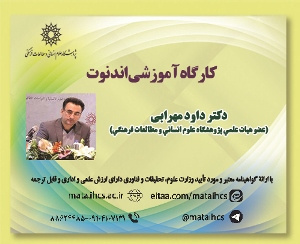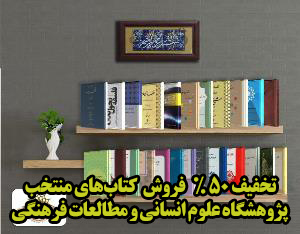والایی قطعات گذشته: تبیین نسبت ویرانی و والایی در چاپ های پیرانزی بر مبنای آراء زیباشناختی کانت (مقاله علمی وزارت علوم)
درجه علمی: نشریه علمی (وزارت علوم)
آرشیو
چکیده
کمتر اثری را می توان در میان چاپ های متعدد «پیرانزی» یافت که اساساَ مربوط به «گذشته» نباشد. در این مجموعه آثار، ویرانی پرتکرارترین مضمون است. در این مقاله در یک سطح «چگونگی» بازنمائی ویرانه ها در آثار پیرانزی محل پرسش است و در سطحی دیگر بر پایه شواهد متنی «چرایی» چنین نمودی با تشریح مفهوم «والایی» در چارچوب زیباشناسی کانت بررسی شده است. یافته های «توصیفی - تحلیلی» این پژوهش حاکی از آن است که «قطعه وارگی» مشخصه اصلی نمایش «گذشته» در آثار پیرانزی است. برجسته ترین نمودِ ویرانه های پیرانزی ابعاد عظیم آنهاست و از سوی دیگر این عظمت با گذر «زمان»، همچون نمودی از قدرت قاهره طبیعت، دچار زوال گشته و تنها قطعاتی از آن باقی مانده است. چنین نمایشی از یادمان ها یادآور «والای ریاضی» و «والای پویا» در دستگاه زیباشناختی کانت است. گویی «متخیله» در مواجهه با «والاییِ» چنین ویرانه هایی از «تلفیق» دریافت های فزاینده ادراکی باز می ماند. این شکست ناشی از مواجهه با ایده «والایی تمدن روم» است. پیرانزی در آثار مختلف خود به زبان تصویر و کلام کوشش کرده که این شکوه ازدست رفته را باز یابد، اما این تمدن و تمثلش در شهر رم چنان «والاست» که لزوماَ به صورت امری «ناتمام» و «قطعه وار» تصویر می شود.The Sublimity of Fragmented Past: Exploring the Relationship between Ruin and Sublimity in Piranesi's Etchings Based on Kantian Aesthetics
There are only a few works you can find in Piranesi's Etching that are not related to the "past". In his work, "ruin" is the most frequent theme. This article targets the ways ruin is depicted in Piranesi's work. Thus, by considering Piranesi’s prime and typical works and moving through his varying embodiments of ruin, this article will explain the different aspects of these representations and describes, the visuals of the way ruin is shown in his works. Based on Kant's theory of aesthetics in "The Critique of Judgment" and describing the concept of "sublimity" within that theoretical framework, it’s been attempted to provide the ground for answering "why" this type of representation reflects sublimity.The descriptive-analytical findings from this research indicate that fragmentality is the main feature in showing "the past" in Piranesi's work. Some of his works have archaeological approach, and by them, Piranesi tries to give us an "image" from the past. The dominance of the visual aspect and the frequency of the designs and their expansive range, from fireplace details to monuments and urban design, show that, in Piranesi's view, these pictures are beside each other in a sequence to build a complete picture of "the past". Although "phrases" come in to help the visual with accuracy and detail in some of these pictures, the fragmented quality of the contents of these depictions and the distance between the different types of them are not explained, as if this past would always represent itself as "lost". The recurring theme of "ruin" is also confirming of such an approach. Shape-wise, the most prominent manifestation of Piranesi's "ruins" is their enormous dimensions. Such depictions of memorials are recounting of the "mathematically sublime" in Kant's aesthetic system. As if in the face of "the sublimity" of these ruins, imagination fails to comprehend the mounting perceptual apprehensions. Also, ruins, in different ways, bespeak the power of the passing of time as a natural force. The sign of decadence on these ruins, in the forms of distortion of segments and growth of moss and greens, on another level, can intrigue experiencing sublimity in the audience. This experience is reminding of the "dynamically sublime" in Kant's aesthetics, where the subject feels fear when confronted by the power of nature. This fear, existing in Piranesi’s memorial, can be especially observed in Piranesi’s prison series. Prisons have nested spaces that evoke the impossibility of escaping such powers. In addition, by reviewing the content of the pictures and Piranesi’s text, it is apparent that this failure to comprehend is caused by facing the sublimity of the Roman Empire. Piranesi, in his different works, has attempted to depict this lost glory through pictures and words. However, this civilization and its example in Rome are so “sublime” in his view that they are depicted as a “fragmented” matter.




